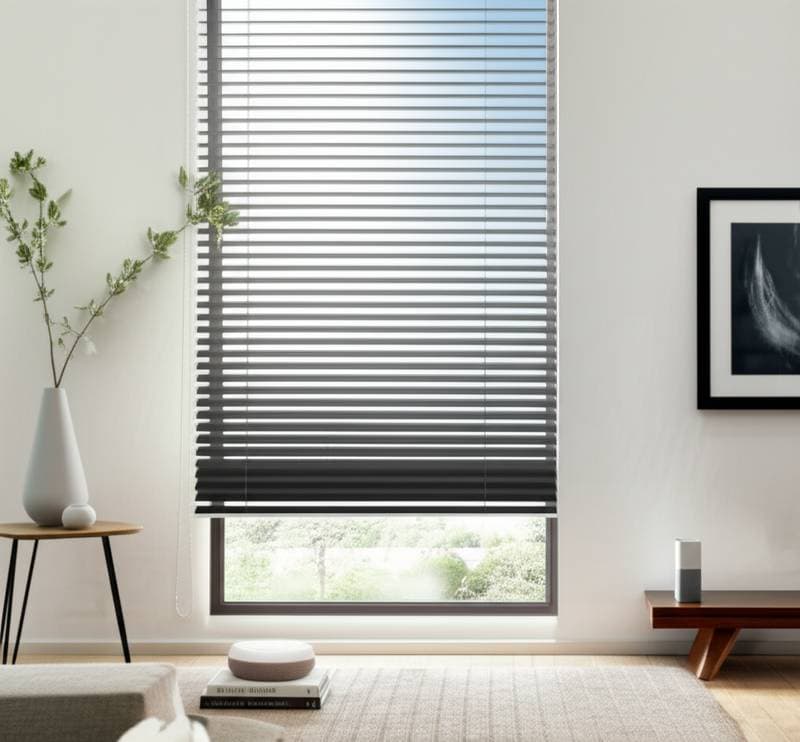Voice-Controlled Blinds: Enhancing Home Comfort Effortlessly
Picture entering your living room and issuing a simple"Open the blinds." Sunlight streams in gently, illuminating the room without any physical effort on your part. This scenario represents the current reality of voice-controlled blinds, which integrate seamlessly into daily life to deliver convenience, energy savings, and aesthetic appeal.
The Value of Voice-Controlled Blinds
Smart home devices once seemed reserved for affluent households. Today, they serve as practical tools to streamline routines. Motorized blinds, shades, and curtains introduce automation that prioritizes ease over intricacy. Integration with platforms such as Amazon Alexa, Google Assistant, or Apple HomeKit allows users to manage window coverings through voice commands alone.
Individuals facing challenges with inaccessible windows or seeking precise light management find these systems particularly beneficial. They maintain optimal temperatures, shield interiors from damaging UV rays, and align with broader home automation for reduced energy consumption.
Key Features Overview
- Control Options: Voice activation, mobile applications, or handheld remotes
- System Compatibility: Seamless pairing with leading smart home ecosystems
- Cost Spectrum: Affordable retrofit solutions to bespoke professional installations
- Installation Choices: User-friendly DIY packages or expert-assisted setups
- Ideal Applications: Elevated or expansive windows, multi-layered shading needs
Understanding the Mechanism
Contemporary motorized window coverings incorporate compact, near-silent motors embedded within the roller or headrail assembly. These components establish wireless connections to a central hub or directly to the residence's Wi-Fi infrastructure. After synchronization with a chosen voice assistant, users execute adjustments via straightforward verbal instructions.
Users can program recurring schedules, operate blinds from the kitchen during meal preparation, or establish scene-based presets for dawn illumination or dusk privacy. Battery-operated units prove ideal for temporary residences or scenarios avoiding wiring modifications, offering months of operation per charge. In contrast, hardwired variants excel in fixed setups or for oversized panels. Reputable manufacturers including Lutron, Somfy, and IKEA's Fyrtur series provide dependable options spanning various budgets.
To illustrate, consider a typical setup: A homeowner links Somfy motors to Google Assistant. A command like "Good morning" triggers blinds to rise gradually, complementing automated lighting for a serene wake-up routine. This level of integration extends to grouping multiple rooms, ensuring consistent ambiance throughout the home.
Integrating Design with Functionality
Voice-controlled blinds excel by harmonizing advanced features with visual harmony. Selection of materials, hues, and patterns remains unchanged from conventional options. Fabrics range from light-diffusing linens and insulating cellular shades to eco-friendly bamboo weaves, all adaptable to motorized frameworks.
Certain providers facilitate upgrades to legacy blinds through add-on smart motors, extending the utility of existing installations. Light management evolves into an intuitive process. Blinds can simulate natural sunrise progression to ease morning transitions or seal shut at twilight for enhanced seclusion. Such automation fosters environments that adapt to personal schedules, eliminating repetitive manual interventions.
For example, in a modern loft with floor-to-ceiling windows, combining sheer panels for daytime diffusion with blackout layers for evenings creates versatile control. This approach not only elevates aesthetics but also supports wellness by regulating natural light exposure.
Achieving Savings and Promoting Sustainability
While initial appeal often centers on convenience, the enduring advantages lie in operational efficiency. Automated shading minimizes thermal fluctuations, directly impacting utility expenses. In warmer months, blinds deploy during intense solar exposure to preserve cooler indoor climates, easing reliance on air conditioning.
During colder seasons, they retract to capture passive solar heating, supplementing heating systems. Homeowners frequently integrate these with monitoring applications to quantify reductions in energy use. Even modest implementations, such as in compact urban dwellings, yield tangible improvements by mitigating glare and overheating.
Sustainability extends beyond economics. Many systems utilize recyclable components and low-energy motors, aligning with environmentally conscious living. Pairing blinds with smart thermostats amplifies these effects, potentially cutting annual heating and cooling costs by up to 20 percent in well-optimized homes.
Practical Steps for Implementation
- Initiate Modestly: Automate a single room or key window to evaluate performance before broader adoption.
- Verify Integration: Confirm that selected blinds align with your existing voice assistant ecosystem.
- Evaluate Power Needs: Opt for rechargeable batteries in versatile setups; choose wired for high-frequency operations.
- Optimize Layering: Blend translucent and opaque materials to achieve nuanced light modulation.
- Account for Maintenance: Ensure adequate clearance around mounts for routine charging or adjustments.
Additional considerations include assessing window dimensions and orientation. South-facing exposures benefit most from automated heat control, while north-facing ones prioritize consistent daylight. Consulting product specifications helps match features to specific architectural elements.
Embracing the Everyday Transformation
Voice-controlled blinds integrate fluidly into routines, shifting focus from mechanical hassles to sensory enjoyment. Cords and pulls fade from memory as spaces gain a refined, responsive quality. Applicable to urban high-rises or spacious family homes, this enhancement delivers enduring practicality and sophistication.
Ultimately, these systems demonstrate the synergy of innovation and habitability. They cultivate residences that respond intuitively, promote relaxation, and reflect individual preferences through effortless voice interactions.
